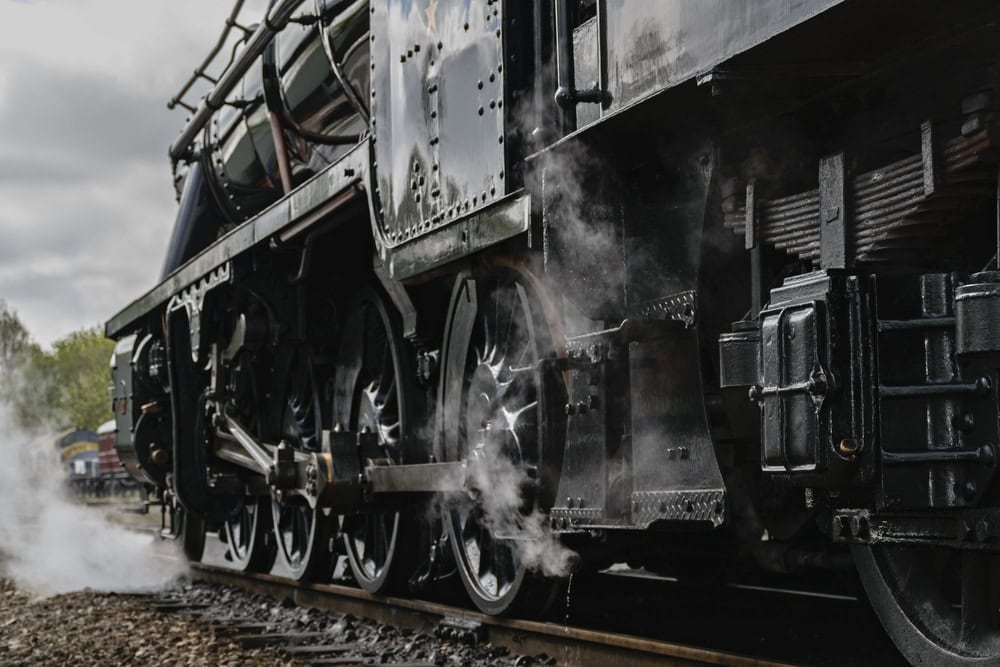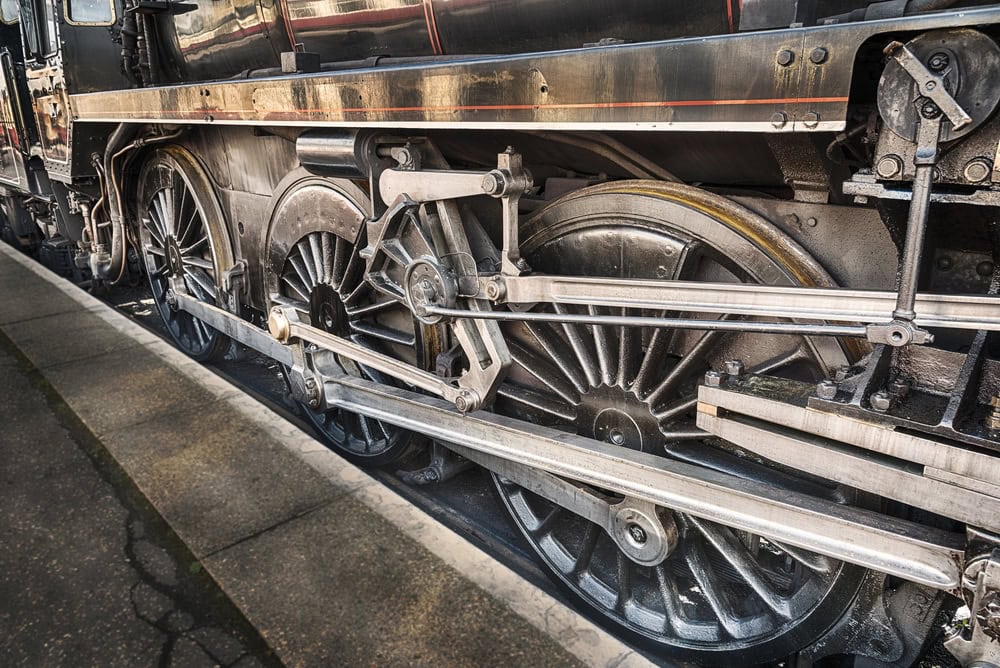Trains have got a lot faster, I mean A LOT faster since the 1800s, but let’s take a look at where train speed started from and how it increased.
So how fast were trains in the 1800s? Throughout 1820-1830, trains ran at 15-27mph. By the 1850s, the highest speed that steam trains could go was 80 mph. And by 1870 and beyond, trains could run as fast as 112 mph.
But there is more, read on.

The 1800s held a notable era for the United States of America, everything started to change when trains and railroads commenced.
Railroads showed efficiency, speed, and amazing potential for growth. Furthermoe they were also so much more economical because of other methods of transport.
These qualities made railroads exceedingly appealing to the government and prospective investors. Therefore, they grew and expanded tremendously within a few decades.
But of course, these locomotives weren’t as fast as today’s modern trains. For your reference, Amtrack’s Acela can reach speeds of 150 miles per hour. So, how fast were trains in the 1800s? Let’s take a look.

4 Early Locomotives in America: Railroad Speed History
Trains and their speeds had to start somewhere. So, let’s take a look at four of the earliest locomotives in America:
1. Stourbridge Lion: 15 miles per hour
The Stourbridge Lion was the first locomotive to operate in the United States. After its development in England, Horatio Allen transported it to America in 1828.
The locomotive’s first voyage was a six-mile round trip in Pennsylvania. Here, it hit speeds of 15 miles per hour. It functioned sufficiently. However, the locomotive’s tremendous weight caused the wooden tracks to crack.
This was mainly why British locomotives did not dominate American railroads. Their trains were too heavy for the tracks in the United States and caused safety concerns.
Consequently, The Stourbridge Lion became a museum piece. And today, you can find this lovely piece of railroad history at the B&O Railroad Museum.
2. John Bull: 25-30 miles per hour
Another British-manufactured steam locomotive that operated in America was the John Bull.
John Bull was constructed by Robert Stephenson & Company. It could run at 20-30 miles per hour. The locomotive was also put into service by the Camden and Amboy Railroad (C&A) — the state’s pioneering rail line.
From 1833 to 1866, the C&A made extensive use of it. Afterward. it was retired from its operation and put into storage.
3. The Tom Thumb: 13 miles per hour
The Tom Thumb by Peter Cooper then appeared in 1830. This steam train became the first locomotive to haul a train car. Tom Thumb could run at 13 miles per hour. Although, this train was built more as a proof-of-concept rather than a commercial locomotive.
Considering the size of traditional steam trains, this one was rather small. Nonetheless, it successfully got the Baltimore and Ohio Railroad to start using steam locomotives.
4. Best Friend of Charleston: 15-25 miles per hour
Shortly after Tom Thumb in 1830, came the Best Friend Of Charleston. This was the very first commercially-operated steam train built in America.
The South Carolina Canal and Rail Road Company operated this locomotive. It ran through a broad-gauge track between Charleston to Hamburg.
Unfortunately, the best friend of Charleston was very short-lived. An explosion incident destroyed the locomotive in 1831.
The Evolution and Milestones Of Locomotives And Train Speed
These locomotives truly changed America’s rail network. They additionally paved the way for more trains, locomotive engine innovation, and expansion.
By the 1830s, more local American manufacturing industries were producing more locomotives. One example was DeWitt Clinton. This train had an average speed of 25 to 27 miles per hour.
There were already 14,000 kilometers (or 9,000 miles) of railroads established by 1850. And throughout 1855-1870, the United States administered a land grant system.
The land grant system provided western railroads with 129 million acres of land. Numerous renowned lines were also opened due to this initiative.
During these times, the top speeds of trains increased to around 80 miles per hour.

The 1870s and beyond marked a significant time for railroads, as The Second Industrial Revolution occurred. This was a period of tremendous scientific progress, standardization, and industrialization.
This era made it practical to ship goods at lower costs. Additional lines were also constructed using less expensive rails. Moreover, railroads benefited from the lower prices of coal for steam trains.
As a result of these combined efforts, the United States laid an equivalent of 75,000 miles of trackage. In fact, this number was more than any other country at the time.
And finally, in 1893, a locomotive hit a new speed record. This was the New York Central & Hudson River 4-4-0 #999. It reached speeds of 112 miles per hour.
How Fast Were Trains In The 1800s? The Bottomline
The speeds of trains gradually progressed during the 1800s. The first locomotives to ever operate in the country ran at 13-30 miles per hour.
During the 1830s, trains could run up to 27 miles per hour. And from 1855-1870, speeds increased to around 80 miles per hour.
Lastly, the highest speed for trains in the 1800s was around 112 miles per hour.

